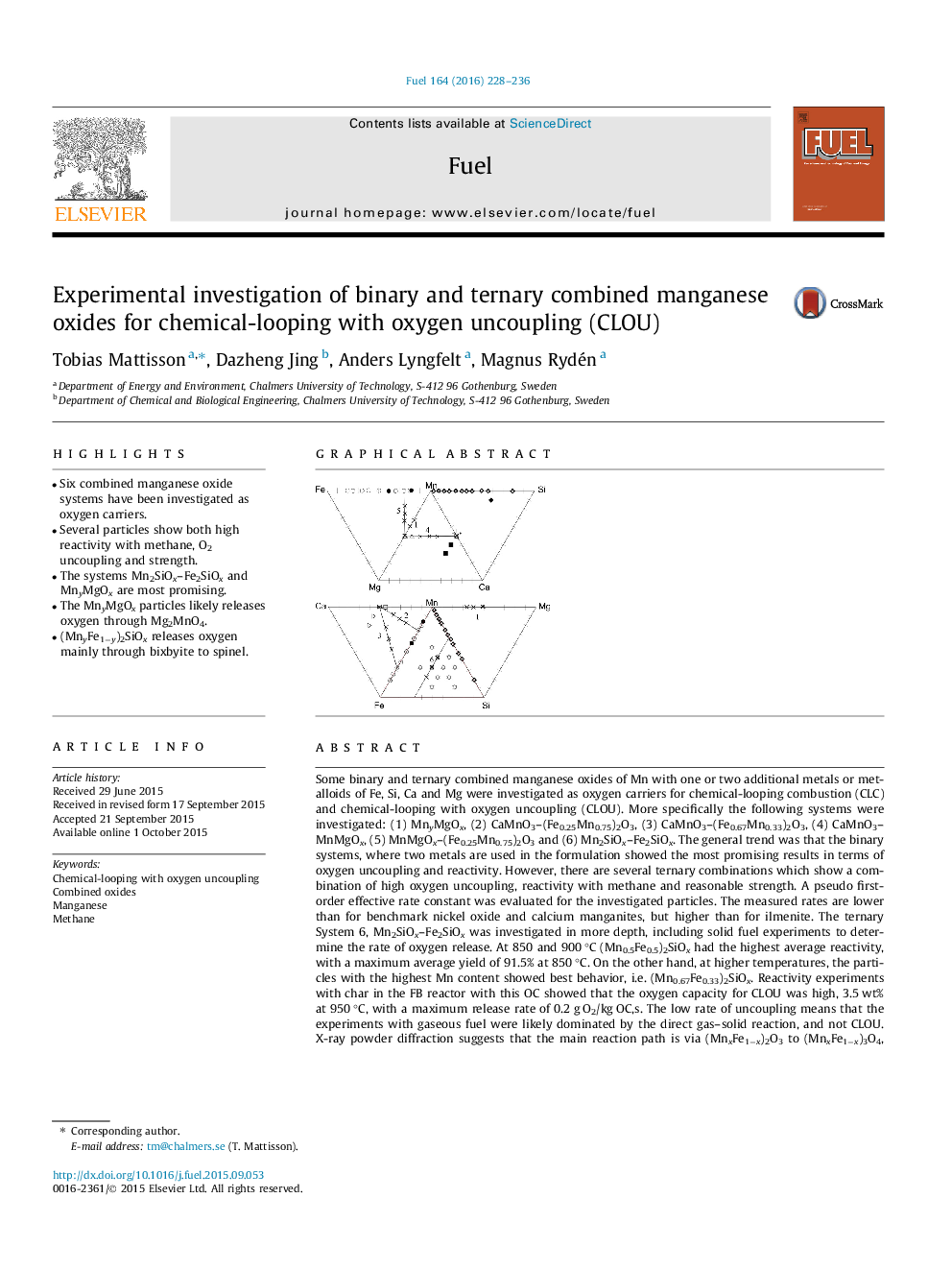| Article ID | Journal | Published Year | Pages | File Type |
|---|---|---|---|---|
| 205393 | Fuel | 2016 | 9 Pages |
•Six combined manganese oxide systems have been investigated as oxygen carriers.•Several particles show both high reactivity with methane, O2 uncoupling and strength.•The systems Mn2SiOx–Fe2SiOx and MnyMgOx are most promising.•The MnyMgOx particles likely releases oxygen through Mg2MnO4.•(MnyFe1−y)2SiOx releases oxygen mainly through bixbyite to spinel.
Some binary and ternary combined manganese oxides of Mn with one or two additional metals or metalloids of Fe, Si, Ca and Mg were investigated as oxygen carriers for chemical-looping combustion (CLC) and chemical-looping with oxygen uncoupling (CLOU). More specifically the following systems were investigated: (1) MnyMgOx, (2) CaMnO3–(Fe0.25Mn0.75)2O3, (3) CaMnO3–(Fe0.67Mn0.33)2O3, (4) CaMnO3–MnMgOx, (5) MnMgOx–(Fe0.25Mn0.75)2O3 and (6) Mn2SiOx–Fe2SiOx. The general trend was that the binary systems, where two metals are used in the formulation showed the most promising results in terms of oxygen uncoupling and reactivity. However, there are several ternary combinations which show a combination of high oxygen uncoupling, reactivity with methane and reasonable strength. A pseudo first-order effective rate constant was evaluated for the investigated particles. The measured rates are lower than for benchmark nickel oxide and calcium manganites, but higher than for ilmenite. The ternary System 6, Mn2SiOx–Fe2SiOx was investigated in more depth, including solid fuel experiments to determine the rate of oxygen release. At 850 and 900 °C (Mn0.5Fe0.5)2SiOx had the highest average reactivity, with a maximum average yield of 91.5% at 850 °C. On the other hand, at higher temperatures, the particles with the highest Mn content showed best behavior, i.e. (Mn0.67Fe0.33)2SiOx. Reactivity experiments with char in the FB reactor with this OC showed that the oxygen capacity for CLOU was high, 3.5 wt% at 950 °C, with a maximum release rate of 0.2 g O2/kg OC,s. The low rate of uncoupling means that the experiments with gaseous fuel were likely dominated by the direct gas–solid reaction, and not CLOU. X-ray powder diffraction suggests that the main reaction path is via (MnxFe1−x)2O3 to (MnxFe1−x)3O4, although the reaction between Mn7SiO12 to MnSiO3 cannot be ruled out as a possible route of oxygen transfer. This was supported by thermodynamic calculations of this multi-component system.
Graphical abstractFigure optionsDownload full-size imageDownload as PowerPoint slide
